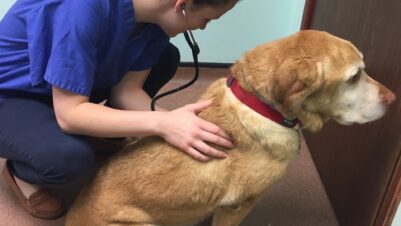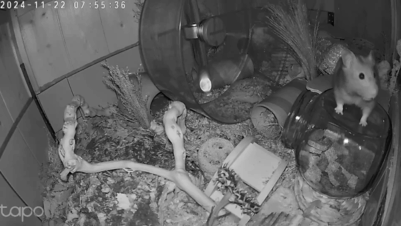
Senescence – the process of ageing – is a continual and inevitable process for the vast majority of animals. Unless and until hydra, jellyfish or Greenland sharks become commonly kept as companion animals, it behoves owners, legally and morally, to provide the best care that they can as their animal ages.
Recognising the signs of ageing in pets
We often privilege puppyhood and kittenhood and adolescent life stages. Understandably, and rightly, a lot of focus is placed on good breeding and rearing practices, alongside early training. Even so, the 2024 National Dog Survey found that just 7 percent of UK dog owners had undertaken formal training, and 6 percent even believed that training is unnecessary (Dogs Trust, 2024). The number of owners undertaking lifelong training or seeking training advice later in their dog’s life is likely to be much smaller and possibly correlated with owners who train for an activity. Further, the number of owners who seek help with training cats as routine is likely to be extremely low. Without the habit of lifelong training and with veterinary referrals proving difficult outside of extreme situations, it is hard for trainers and behaviourists to access clients to offer proactive support during the ageing process.
Without the habit of lifelong training and with veterinary referrals proving difficult outside of extreme situations, it is hard for trainers and behaviourists to access clients to offer proactive support during the ageing process
Both anecdotal experience in practice and research suggest that owners either are not effective in recognising signs of ageing and/or do not seek treatment from vets when required (Wallis et al., 2025; Harvey, 2021). Unfortunately, the very inevitability of the ageing process almost renders its middle and late stages invisible or at least makes them seem impervious to alleviation as far as many companion animal owners are concerned.
Understanding emotional signals from companion animals
The Dogs Trust found that 80 percent of owners expressed confidence in understanding canine emotional signals, but only 24 percent could identify mild stress in dogs on a consistent basis (Dogs Trust, 2024). Respondents were subject to the Dunning-Kruger effect: those who were most confident in their abilities were, in fact, less able than those with less confidence.
Poor ability to recognise common emotional signals means that it’s likely that owners are not at all attuned to signs of pain either
Being able to identify emotional signals matters. In the same survey, 78 percent of respondents believed that their dog would never bite them and 63 percent said their dog would never bite a stranger, even though a bite may be the result of discomfort, pain or reduced faculties that can occur with ageing. Simply startling an elderly animal may result in an aggressive response, with or without pain as a factor.
Poor ability to recognise common emotional signals means that it’s likely that owners are not at all attuned to signs of pain either. Ninety-three percent of cat owners and 99 percent of dog owners said that their animals could show signs of happiness, but only 65 percent of cat owners and 85 percent of dog owners felt that their animals could show signs of pain. Further, 87 percent of owners thought that they could tell if their dog was in pain, even though it can be challenging for vets to identify, especially in cats (Pickersgill et al., 2023).
Aiding ageing pets with declining health
Immunosenescence has been shown to result in a decline in effective immune responses in dogs and cats, and senior cats have been shown to have increased production of pro-inflammatory cytokines (Day, 2010). Owners need to be aware that healing processes may slow and the risk of autoimmune diseases may increase in ageing pets.
The consequences of declining eyesight and hearing, alongside mobility restrictions, can be made easier for animals and thus their owners to cope with. Even where vets are unable to make a significant improvement, behaviourists and trainers can help owners to make lifestyle adjustments that will help them to enjoy their animal’s final years to the full.
Enrichment activities
Geriatric animals that were provided with enrichment and that were fed a high antioxidant diet have been shown to have decreased oxidative damage in the brain, which suggests that cognitive decline may be at least slowed (Morris et al., 2011). Enrichment is now widely used in zoos and has helped to lead to a decline in zoochotic behaviours (Yasmeen et al., 2023). There is an analogy with companion animals who are effectively in “captivity” in that they have limited autonomy. Owners can feed from puzzle toys instead of bowls and adjust favourite games to reduce impact on ageing joints. Both can make a significant difference to welfare.
Support from paraprofessionals
Much support can be provided outside of a veterinary setting […] for instance, making adjustments to the placement of resources, making movement easier and more predictable for infirm animals or those with cognitive decline, or simply instilling observational skills in owners
Training and behavioural remediation are usually sought to instill “obedience” or correct a perceived problem. However, positive reinforcement behaviourists and trainers are a largely untapped reserve of proactive information that could help owners to give their companion animals a better quality of life up until, and including, old age.
Overwork is one of the main stressors for vets, and paraprofessionals need to be used much more in support, including in encouraging owners to recognise and seek treatment for geriatric conditions (O’Connor, 2019). Much support can be provided outside of a veterinary setting in the owner’s home, including, for instance, making adjustments to the placement of resources, making movement easier and more predictable for infirm animals or those with cognitive decline, or simply instilling observational skills in owners. This especially obviates the need to transport companion animals who may find travelling uncomfortable.
Final thoughts
Ageing is inevitable, but discomfort and pain, and even fear engendered by declining faculties, need not be. It is up to professionals to cooperate and support each other so that we can support our clients and their animals throughout every stage of their life.








